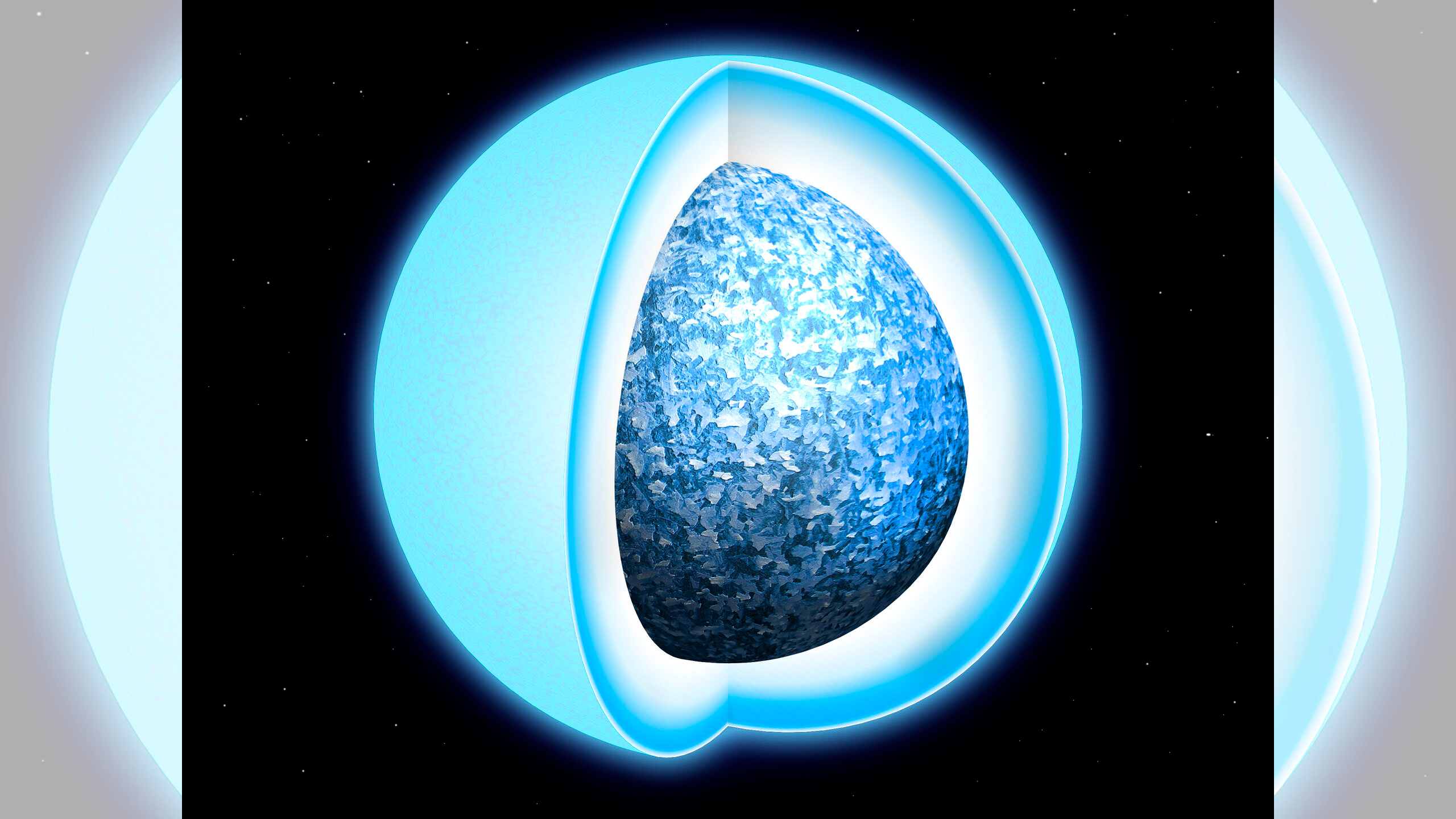This collapsed star is turning into a gigantic diamond before our eyes
Scientists have found a white dwarf that is cooling and crystallizing into a giant diamond.

Scientists have discovered a star that is in the process of crystallizing into a celestial diamond.
The star is a white dwarf — the shriveled husk of a sun-like star that burned off most of its fuel before collapsing. For stars with cores made mostly of metallic oxygen and carbon, the cooling process that follows the collapse into a white dwarf will ultimately result in the star crystallizing into a giant diamond. However, this process is so slow that researchers don't think any star in the universe has actually become an enormous orb of bling; scientists estimate such a transition would take one quadrillion years, and the universe is only 13.6 billion years old. (A quadrillion is a thousand trillions, and a trillion is a thousand billions.)
Now, though, researchers think they’ve found a star that is at the early stages of this transition. The star, dubbed HD 190412 C, is about 104 light-years away in a quadruple star system called HD 190412. The researchers calculated the star's temperature -– about 11,420 degrees Fahrenheit (6,300 degrees Celsius) -– which puts it into the range of a crystallizing white dwarf. Because the system has other stars that have not yet collapsed into the white dwarf state, the researchers were able to use those still-burning star compositions to determine how much metal is in the white dwarf's core. They also calculated the star's age at about 4.2 billion years.
Also key to the calculations is knowing the precise distance of the star system from Earth, because the distance influences the brightness of the light coming from the dimming white dwarf. The researchers used data from the European Space Agency's Gaia Mission, which aims to make a 3D map of a billion stars in the Milky Way.
With this information, the team modeled the white dwarf’s cooling over time, confirming the first case of a crystallizing white dwarf with a known age. Because there are other systems similar to HD 190412, including the star system that is home to the bright star Sirius, the researchers report that other crystallizing white dwarfs might be nearby in the cosmic neighborhood.
The findings were posted June 5 to the preprint database arXiv and have been accepted for publication in the journal Monthly Notices of the Royal Astronomical Society.
Sign up for the Live Science daily newsletter now
Get the world’s most fascinating discoveries delivered straight to your inbox.

Stephanie Pappas is a contributing writer for Live Science, covering topics ranging from geoscience to archaeology to the human brain and behavior. She was previously a senior writer for Live Science but is now a freelancer based in Denver, Colorado, and regularly contributes to Scientific American and The Monitor, the monthly magazine of the American Psychological Association. Stephanie received a bachelor's degree in psychology from the University of South Carolina and a graduate certificate in science communication from the University of California, Santa Cruz.










